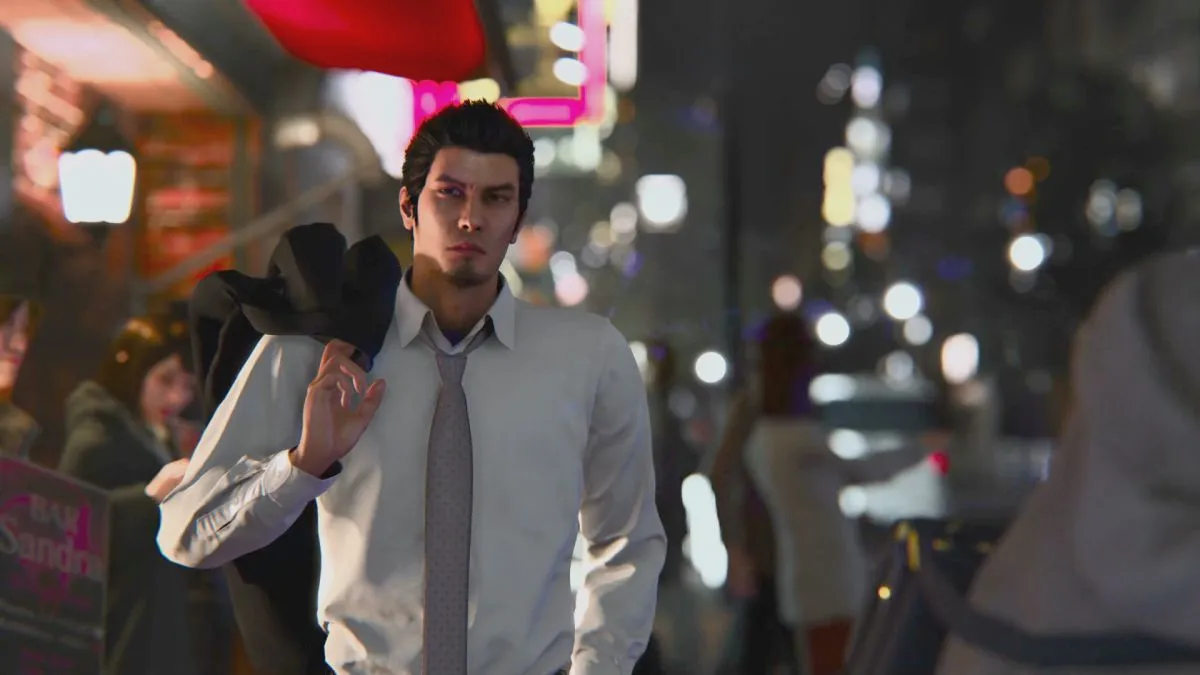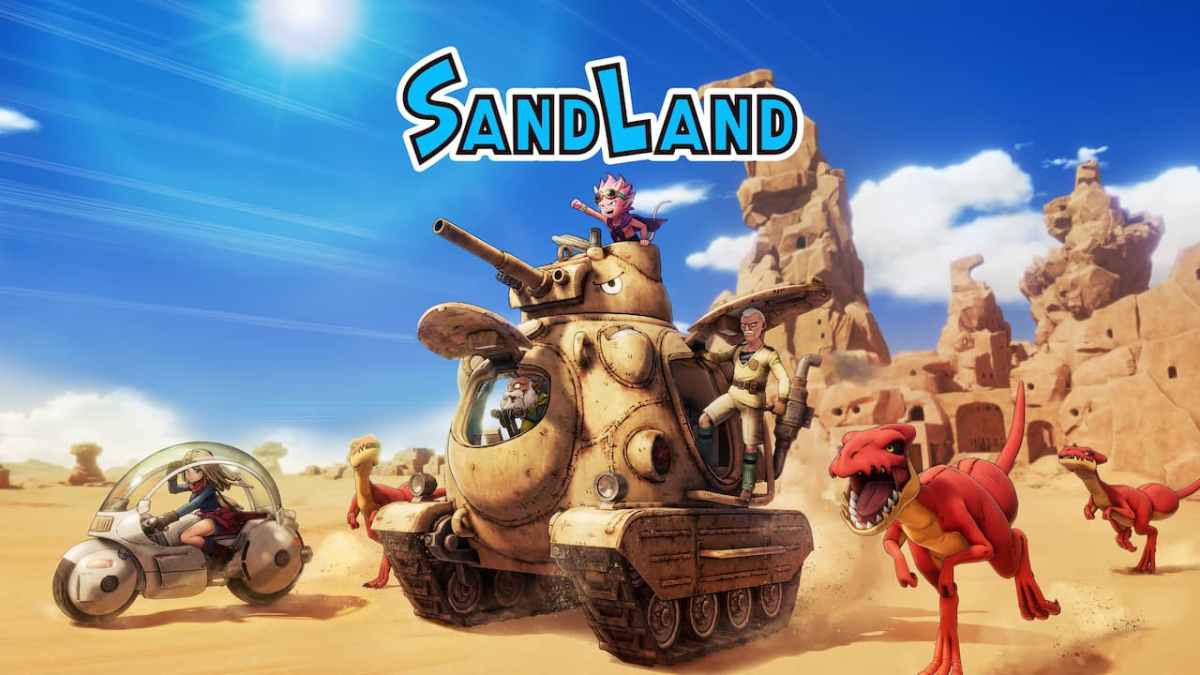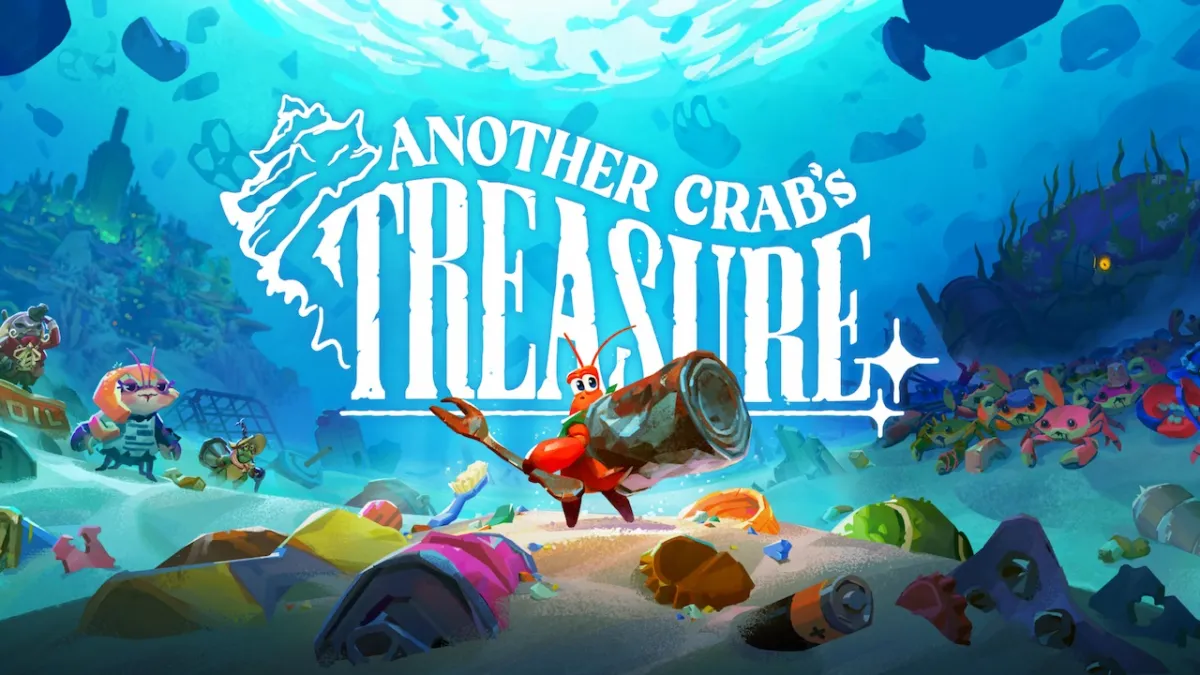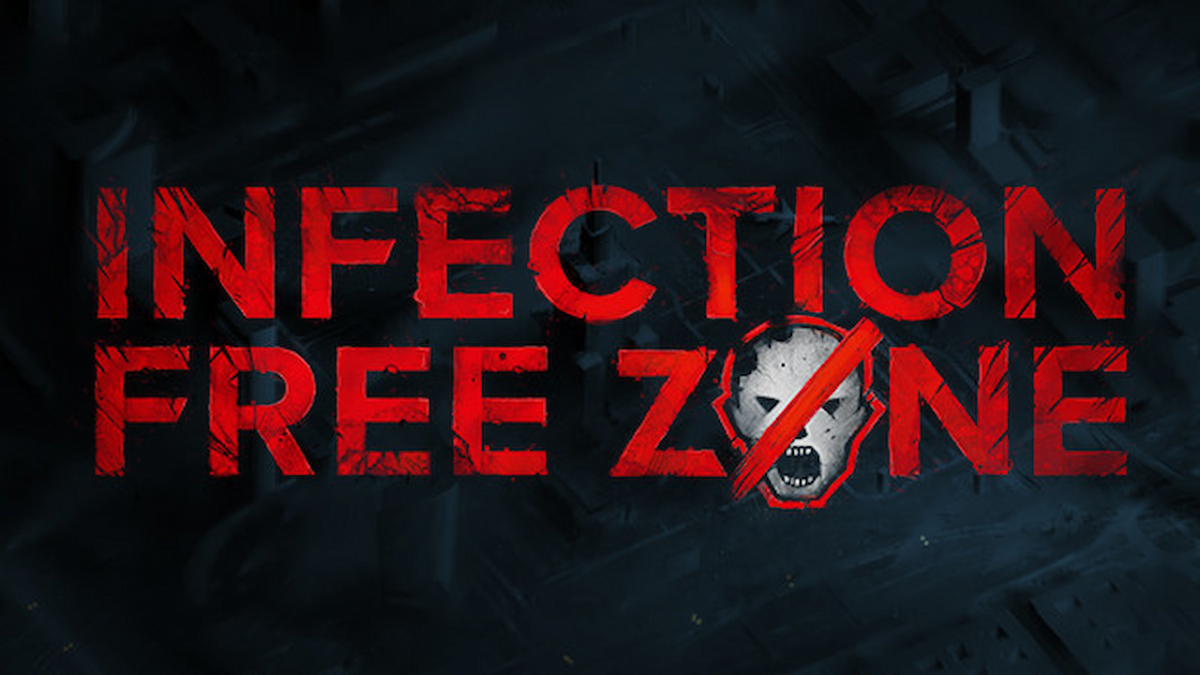Like a Dragon Gaiden: The Man Who Erased His Name is what you might call an appetizer. It bridges Yakuza 6 and the upcoming Like a Dragon: Infinite Wealth by telling you what Kazuma Kiryu’s been up to since stepping away from his role as orphanage guardian.
For long-time fans of the series, Like a Dragon Gaiden features familiar beats and exciting moments. As an entry point to a typically enthralling series, though, it would come up a bit short.
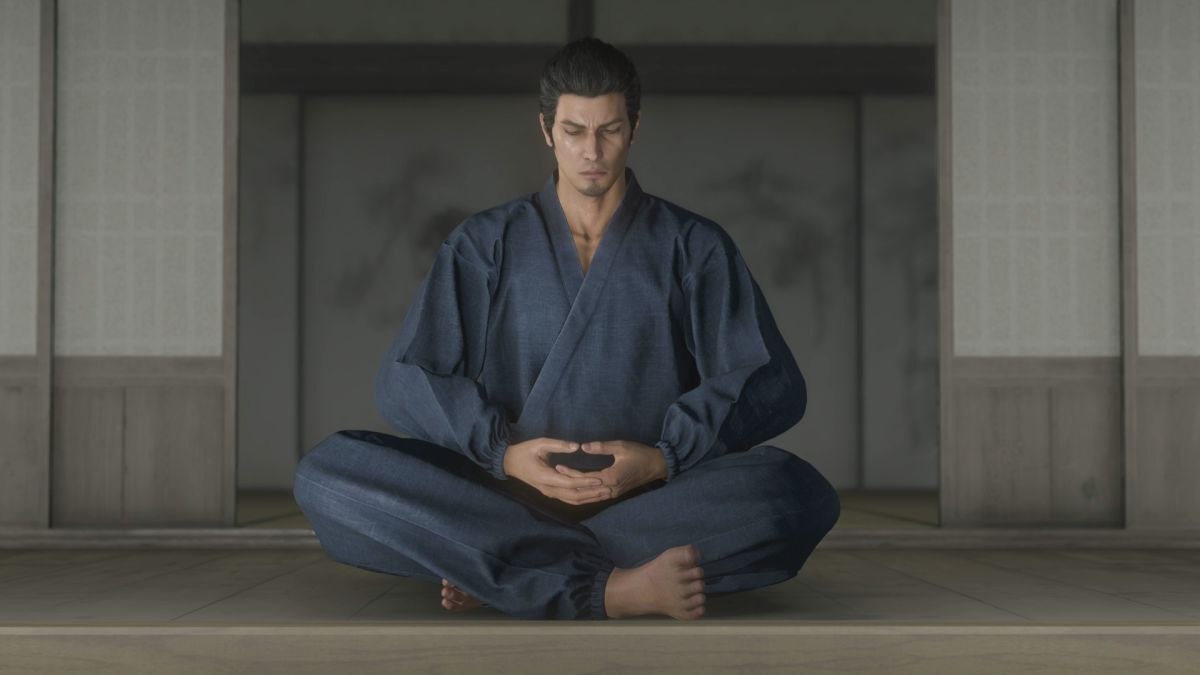
Catching up with an old friend
The game opens to find Kiryu leading an unexciting monastery life. To save the people he loved, he agreed to disappear from the public life. His friends within the Toja Clan (along with the children at the Morning Glory Orphanage) believe him to be dead. He knows their continued safety depends on his obedience to a cruel organization. Selfless to a fault, Kiryu leads a recluse’s life. He shies away from the action that defined his last few decades of existence, except when he completes brief missions on behalf of the people who essentially own the once mighty Dragon of Dojima.
That plot is sometimes touching. The setup capably outlines Kiryu’s current tortured existence. Unless some things were to change, however, the premise wouldn’t lead to an adventure that feels like it belongs in the franchise fans know and love. For that reason, it’s no surprise when Kiryu’s next mission goes awry. He quickly finds himself interacting with old enemies while working to find his place in a world that has no use for the organizations he serves. Living as the unassuming Joryu and fooling everyone because now he wears glasses (which somehow feels even less credible than when Superman slips on some specs to become the mild-mannered Clark Kent), the aging protagonist spends most of his time roaming the Sotenbori neighborhood. In typical Like a Dragon style, he moves from one scrape to another. It turns out a new power struggle is underway, and Kiryu can’t seem to stay out of the middle of it.
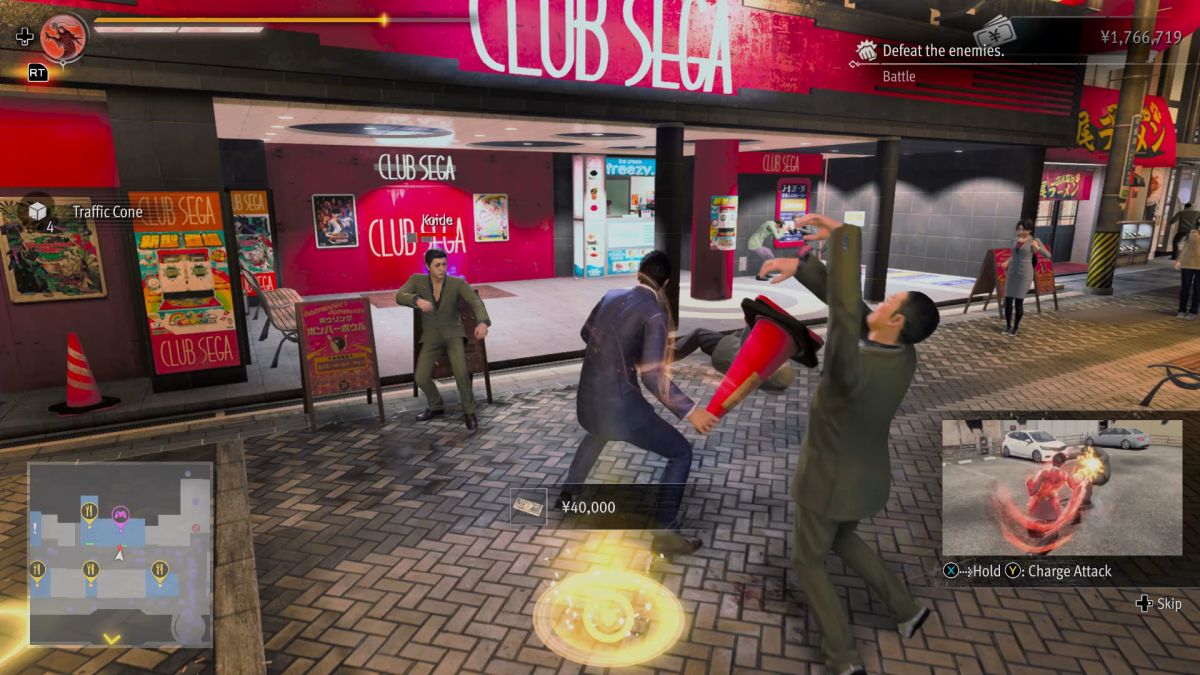
Fighting for longevity
Bad news for Kiryu is good news for players, since now we get the chance to partake in some of the same activities that made us fall in love with these games in the first place. Chiefly, we get to beat the snot out of ne’er-do-wells. Our muscular hero may be getting along in years, but he doesn’t miss a beat. This is a franchise where people shrug off swords to the gut when the narrative demands it. They get shot point-blank and find it only mildly irritating. Kiryu still hefts bicycles or scooters and swings them around like they’re made of cardboard, thus flattening hordes of goons who then flop around on the ground like ragdolls. The developers clearly haven’t forgotten what the franchise is all about.
Unfortunately, it’s difficult to escape the sense that you’ve done most of this before, and that it was better the last few times around. There’s simply too little of the depth I’ve come to expect from the series. A remarkably brief main story campaign is largely to blame, but that makes sense because the game apparently started out as DLC. Then the developers realized they wanted to tell more of the story. They added content to produce a full game, but most of the additions don’t feel substantial. Five chapters aren’t enough. You could rush through them pretty quickly if you wanted to complete only the bare minimum of side content. Of course, most of us don’t play these games that way.
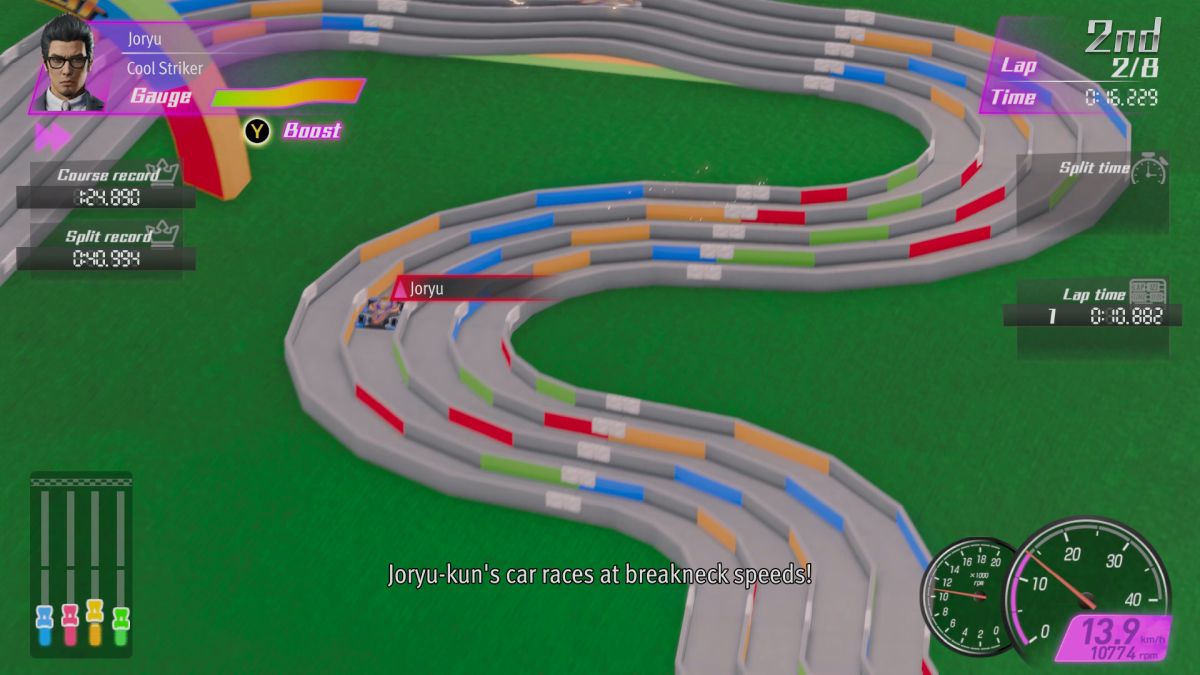
A little side action
Side content has always been half the point with a Like a Dragon game, but this is the heaviest lifting it’s ever had to do. For most of the campaign’s duration, you’ll complete chores for a woman named Akame. She manages a network that helps out the local homeless population, when she’s not busy doing favors for villains who oppress them. As her new errand boy, you complete missions and earn points you can spend unlocking new abilities you won’t ever actually need unless you decide to punish yourself by playing on harder difficulty settings. Your campaign progress sometimes grinds to a halt until you earn enough points and fight enough battles in a nearby coliseum.
The coliseum is introduced pretty early in the story. You can head there to face off against various foes in one of several leagues, which in turn grants you better access to the facility. Then you can recruit fighters, form up teams, and level them up so they might carry you through more difficult brawls. There are dozens of characters, including a few you might recognize from other entries in the series. However, it looks like some of them can’t be recruited without purchasing additional DLC, which I find regrettable. It would bother me more, if not for the fact there are already so many characters, I don’t feel like I have much reason to improve as it is.
Besides the substories and coliseum battling, you’ll find the expected slew of mini-games throughout Sotenbori. At times, the area feels more like an amusement park than it does a city. Activities include billiards, darts, karaoke, poker, and shogi, among others. You also have a camera, which you can use to snap photos of various parts of the city. There is a lot of busywork, and most of it is reasonably diverting, but the mini-games sometimes struggle to justify the time you might easily devote to them. I probably spent more time playing around with my pocket cars than I did battling through all of the campaign’s content.
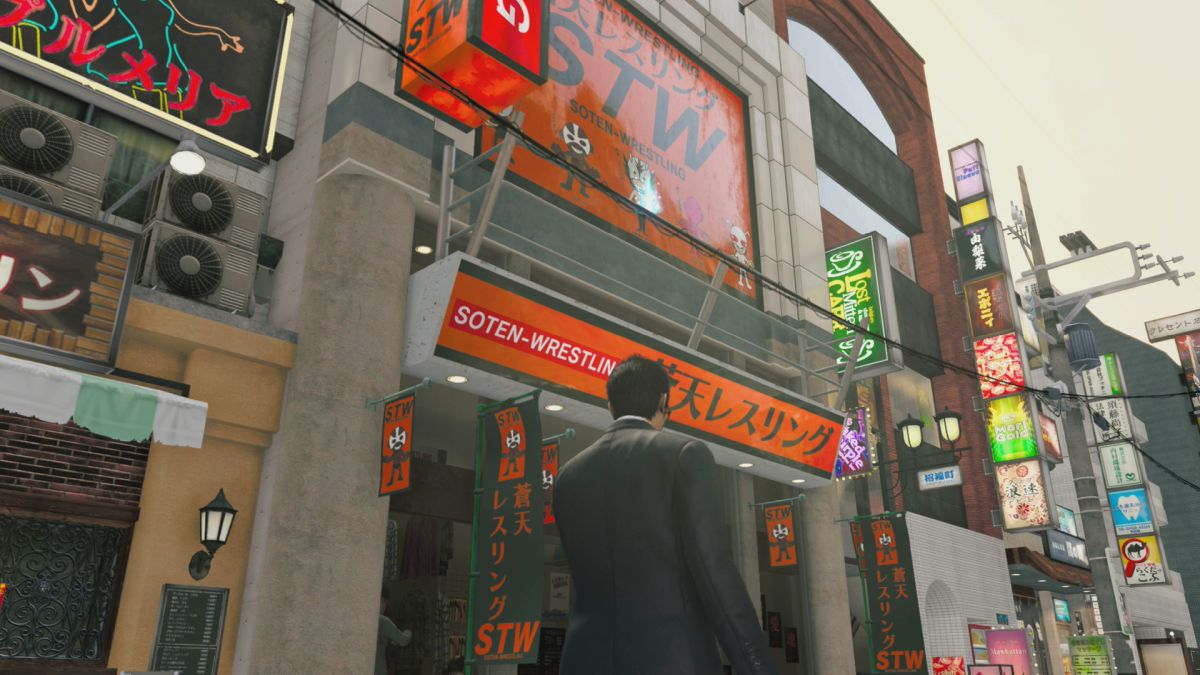
Attached to gimmicks
There are a few adjustments along the way. Kiryu shifts easily between two fighting styles. While using one style, he can summon drones to help him fight. It’s possible to use points and cash to enhance those machines so they are more useful. Enemies sometimes deploy drones, as well. However, they don’t do so often enough for the mechanic to feel like more than an afterthought. It’s not nearly as deep as the drone action I recall from Judgment, for example. You can mostly ignore it. A more useful skill is the ability to use your watch to fire a miniature grappling hook that latches on to distant foes who have been stunned. Then you can pull them quickly toward you and clobber them super hard. In such cases, Kiryu is a bit like James Bond. It’s easy to ignore in battle, though, if you don’t care for it.
Outside of combat, the Spider watch attachments prove more persistently useful. As you wander Sotenbori, you’ll find lots of sparkling points you can search to find keys that access storage lockers. Along higher points, such as telephone poles or out-of-reach awnings, you might discover blue points of light only your watch attachments can reach. The game introduces this mechanic with a simple substory, and then it’s mostly just a way to gather some collectibles. Most of the loot you can gather isn’t all that great, but sometimes you get something neat. I even snagged a playable Sega Master System game that way. Several classics are available, on top of the usual selection of retro arcade titles you can play at Club SEGA. Separately, from the game’s main menu, you can even play multiplayer fighting games with a friend, including Sonic the Fighters. That’s pretty cool.
Related: Like a Dragon Infinite Wealth includes a goofy beach life-sim mode with lots of customization
Another option from the main menu is the Like a Dragon: Infinite Wealth Special Trial Version. However, you can’t access it until you beat the game’s main campaign. That’s a tantalizing reward at the moment, besides being solid marketing. Otherwise, there’s not much to do after the credits roll. You do get freer access to an early-game area, and you can continue working on any substories you may not have finished. The coliseum also has some challenges for you. By the time I finished the main campaign, though, I had also cleared the bulk of the side content. That meant the ‘Premium Adventure’ didn’t offer much. Still, it’s better than a poke in the eye.
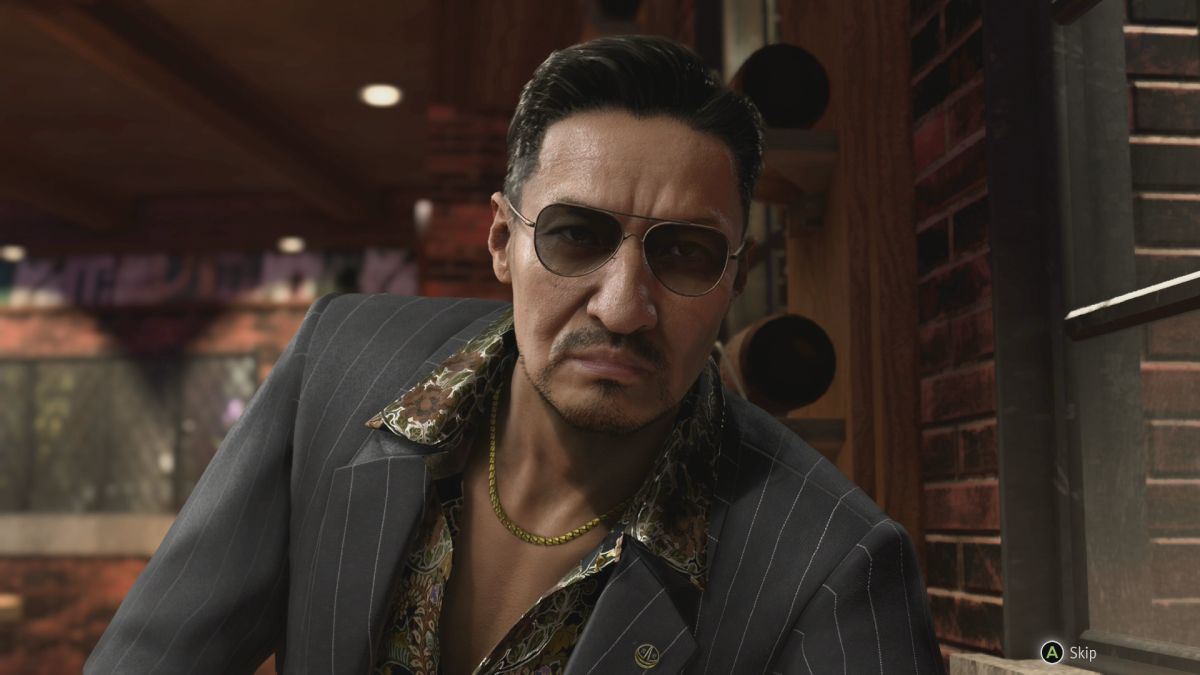
Looking good
Most of the Like a Dragon and Yakuza games up to this point have debuted on older PlayStation hardware. Like a Dragon Gaiden was my first time playing the series on a powerful PC. I must say I appreciated the experience. The Sotenbori neighborhood is densely packed with sights, sounds, and pedestrians. The neighborhood doesn’t cover a lot of real estate, but there’s plenty to see and each street feels dynamic.
Outside of group battles in the coliseum and some late-game shenanigans, I usually faced only a few enemies at a time while onlookers cheered me on from a safe distance (or ran for cover). But the action didn’t slow except during those cinematic moments where the effect was intentional. Colors were vibrant, and the character models in cutscenes were extremely detailed. Some character faces were a bit too textured for my tastes, with pores that looked like graph paper. And some surfaces (including certain articles of clothing and some vehicle exteriors) lacked the detail evident elsewhere. Overall, though, it’s a very pretty game that holds up well in even the most active environments.
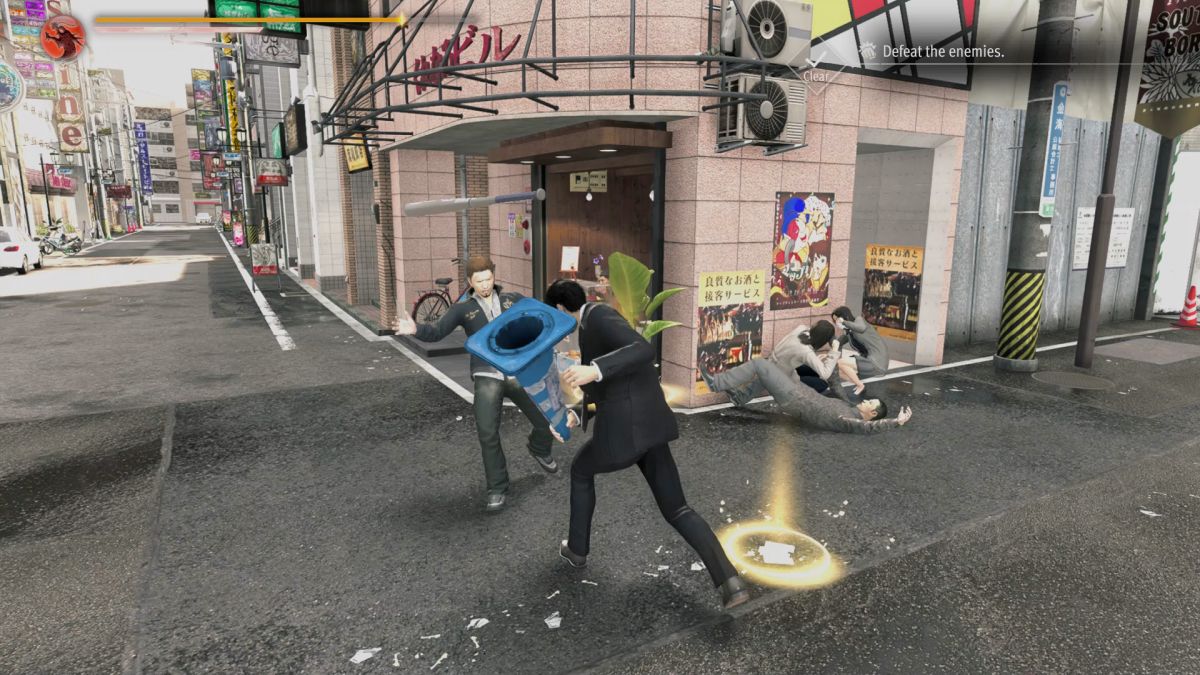
But in the end…
Like a Dragon Gaiden: The Man Who Erased His Name sometimes wasted my time with busywork that didn’t justify itself. Mini-games were fun, and Kiryu’s watch attachment gave me reasons to look even more closely at a city neighborhood already well worth exploring. The barebones plot barely lingered long enough to tell me why I should care about the new supporting characters, though, despite me reaching the end of the campaign with virtually no stone unturned. The final scenes tied things up nicely, and contained a couple of emotional moments that really tugged at my heartstrings.
I enjoyed my time with the game overall, and now I’m looking forward to Infinite Wealth more than ever. I realize it probably sounds silly to say this, considering the game kept me busy for dozens of hours, but I still wish there had been more to it.
Other Like a Dragon Gaiden: The Man Who Erased His Name articles

